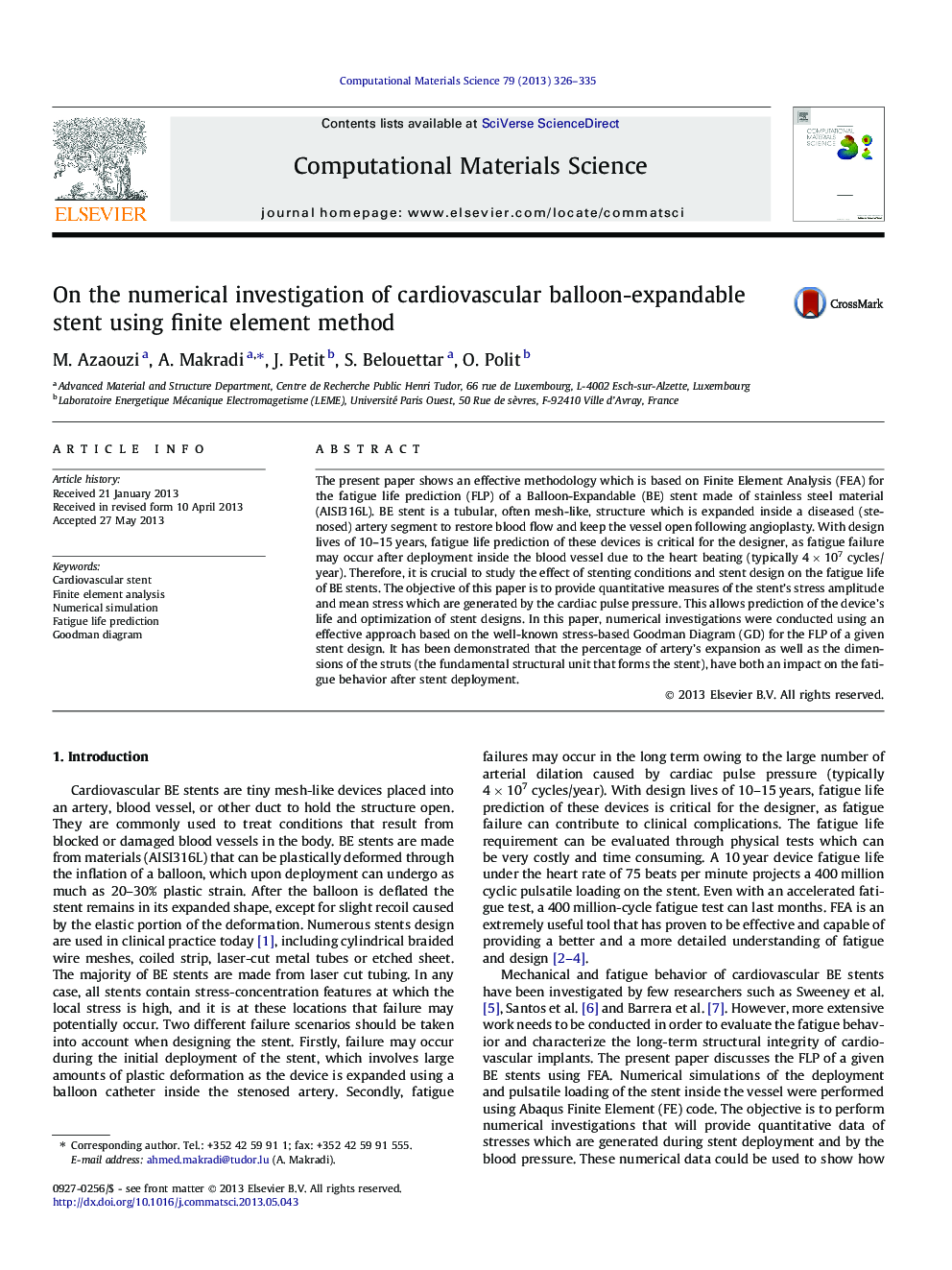| Article ID | Journal | Published Year | Pages | File Type |
|---|---|---|---|---|
| 7961476 | Computational Materials Science | 2013 | 10 Pages |
Abstract
The present paper shows an effective methodology which is based on Finite Element Analysis (FEA) for the fatigue life prediction (FLP) of a Balloon-Expandable (BE) stent made of stainless steel material (AISI316L). BE stent is a tubular, often mesh-like, structure which is expanded inside a diseased (stenosed) artery segment to restore blood flow and keep the vessel open following angioplasty. With design lives of 10-15Â years, fatigue life prediction of these devices is critical for the designer, as fatigue failure may occur after deployment inside the blood vessel due to the heart beating (typically 4Â ÃÂ 107 cycles/year). Therefore, it is crucial to study the effect of stenting conditions and stent design on the fatigue life of BE stents. The objective of this paper is to provide quantitative measures of the stent's stress amplitude and mean stress which are generated by the cardiac pulse pressure. This allows prediction of the device's life and optimization of stent designs. In this paper, numerical investigations were conducted using an effective approach based on the well-known stress-based Goodman Diagram (GD) for the FLP of a given stent design. It has been demonstrated that the percentage of artery's expansion as well as the dimensions of the struts (the fundamental structural unit that forms the stent), have both an impact on the fatigue behavior after stent deployment.
Keywords
Related Topics
Physical Sciences and Engineering
Engineering
Computational Mechanics
Authors
M. Azaouzi, A. Makradi, J. Petit, S. Belouettar, O. Polit,
